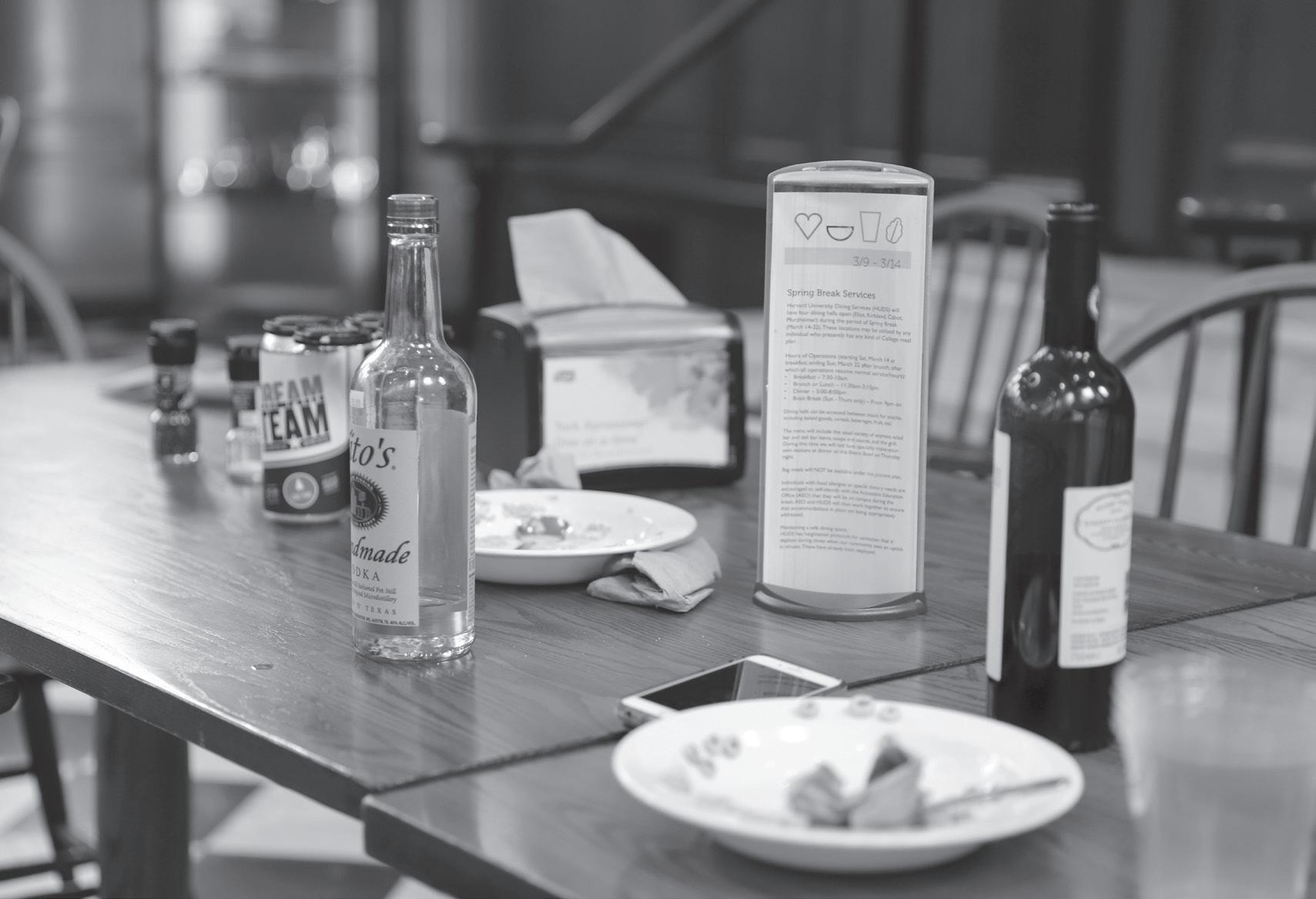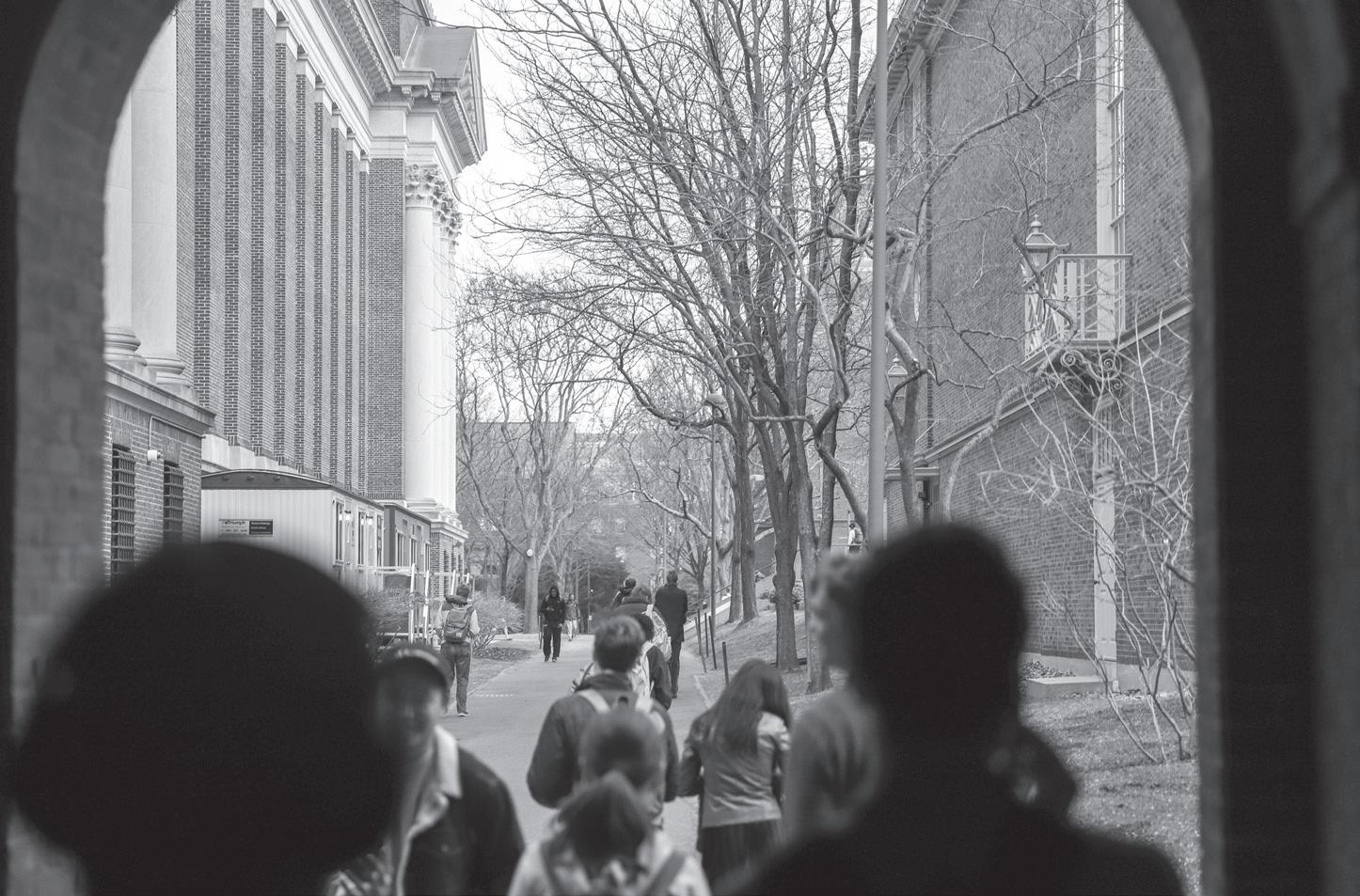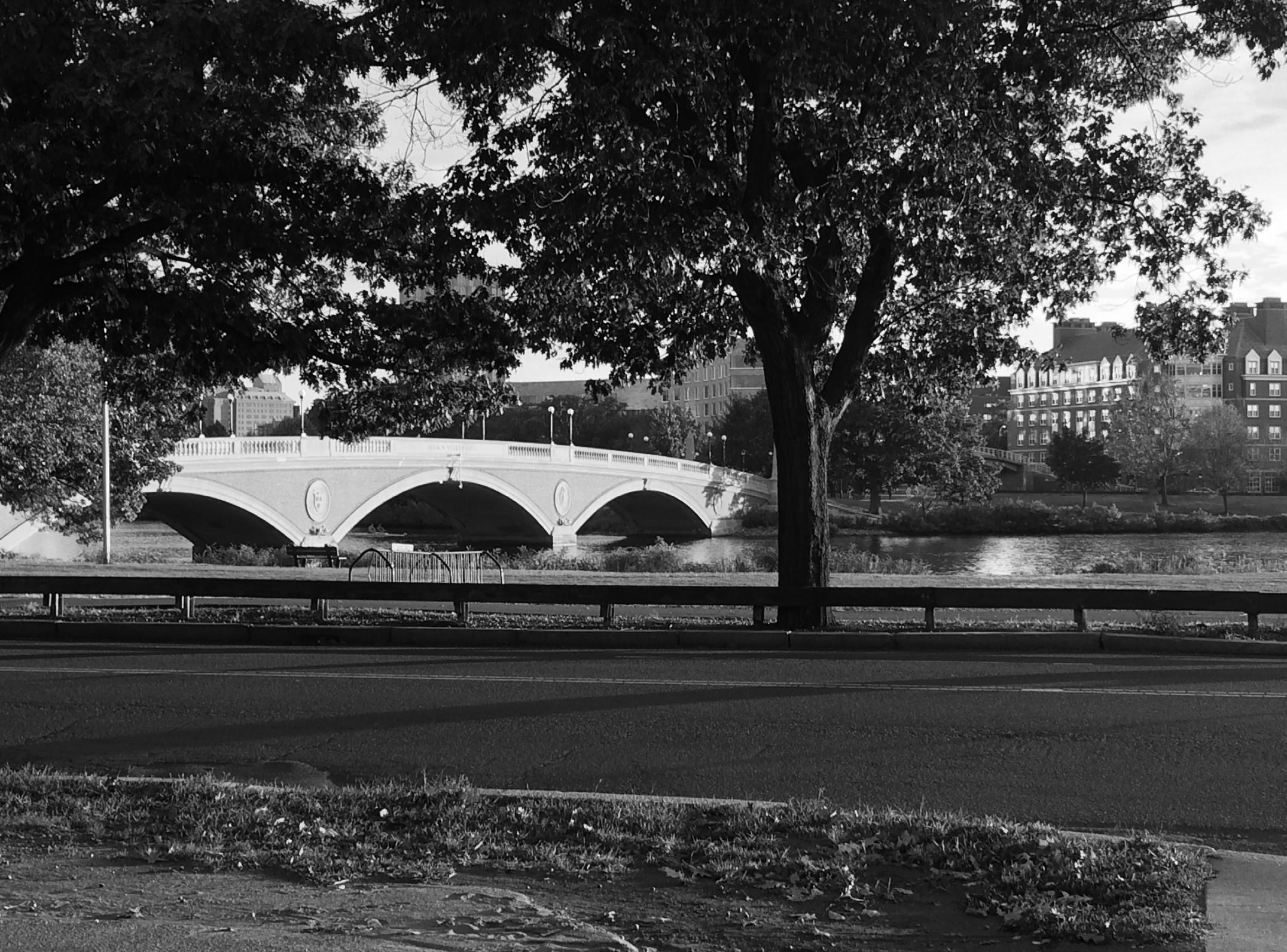e.
s.
THE HARVARD CRIMSON | MARCH 11, 2020
PAGE 6
EDITORIAL THE CRIMSON EDITORIAL BOARD
COLUMN
March 10, 2020: Harvard Stops, But the World Cannot
Connection Means More Than Instagram Stories
H
arvard does not shut its doors. Even during the 1918 Spanish Flu — when 50 million died and 500 million were infected — Harvard did not close. There have been days off — hurricanes, blizzards, the Boston Marathon bombing — but as Dean of Students Archie C. Epps III quipped, “Harvard University will close only for an act of God, such as the end of the world.” Yet here we are. If not at the end of the world, then as President Lawrence S. Bacow announced yesterday morning — to students waking up, walking into midterms, touching up the final clauses of senior theses — we likely find ourselves at the end of our physical time on campus this semester. And though we have much to say in the days to come — words of hope, critiques of process, fears of personal and global proportions — we find ourselves first wanting to speak to the obligations, which out of necessity or as a troubling abdication, the University in sending students home indefinitely abandons. We want to highlight the concerns of those most vulnerable in our community and for the world our institution seeks to serve. Pandemics exacerbate inequality — from who can and can’t afford not to work to who has and lacks health insurance. Harvard’s decision has already begun to lay bare these inequalities and will no doubt continue to do so in deeply troubling and dangerous ways. Coronavirus will hit the most vulnerable members of our community and Cambridge at large with force. Those who stand to lose include people expe-
riencing homelessness, University employees making hourly wages, students with pre-existing risk factors, international and low-income students — particularly those from countries the Centers for Disease Control and Prevention has classified as warning level three — and students who may face other forms of precarity. The University must extend support to these groups. It could start by compensating all workers, allowing international students who find themselves in a broad array of challenging immigration conditions to stay on campus, and supporting those from unstable home backgrounds — many of whom will struggle with Zoom-ing and the other means of remote learning. Furthermore, the University should support organizations that serve vital community service functions, like the Harvard Square Homeless Shelter and Y2Y, which run on student labor, to ensure they can perform their work going forward. And it might also consider collaborating with Cambridge on supporting the local economy and small business owners. Beyond these first concerns — concerns of life here and now — there is also the message Harvard sends to the world. It may not be an exaggeration to say that in removing students from its campus, Harvard has conceded that knowledge production and transmission has effectively stopped. With empty classrooms, archives, laboratories and offices, the closed gates of Harvard University turn away those who see in it the promise of institutions devoted to learning, knowledge, and open dialogue.
At times of instability and catastrophe, our institutions should be beacons of hope. In desperate times, they must continue the vital human work of being, thinking, and acting together. As one of the leading institutions of scholarship in the world, Harvard’s response will inevitably amplify a growing sense of global collapse. Especially as our government — in its messaging, policies, and aid — fails to put together anything even approaching a coherent response to the pandemic, institutions of knowledge should fill the void — step up where President Donald Trump has now repeatedly stepped away from waiting eyes. The production of knowledge has a significance that, at its best, shines through uncertainty, confusion, and doubt. And as we feel an existential humility in the face of this pandemic, Harvard’s choice to close its doors gives us deep reason for worry as students and global citizens. We must as a community remain courageous, compassionate, and committed to each other. We must, as a University, remain committed to the ideals and hard work and of knowledge as a human enterprise and an enterprise for the betterment of humankind. This staff editorial solely represents the majority view of The Crimson Editorial Board. It is the product of discussions at regular Editorial Board meetings. In order to ensure the impartiality of our journalism, Crimson editors who choose to opine and vote at these meetings are not involved in the reporting of articles on similar topics.
Submit an Op-Ed Today!
The Crimson @thecrimson OP-ED
The Three Percent in the Face of the Coronavirus By RAQUEL CORONELL URIBE
F
our years ago, I was in the hospital going through chemotherapy to treat my leukemia. At the time, I had 0.0 neutrophils — the white blood cells that protect you against foreign pathogens; a healthy range is considered 2.5-7.5 neutrophils. I spent two and a half years undergoing chemotherapy, which killed all rapidly reproducing cells, like hair and blood cells, along with the leukemia. Thus, for two and a half years, I had chronically low white blood cell counts. If I had gotten even a whiff of the novel coronavirus, officially known as COVID-19, then, I would have almost certainly been dead within a matter of days. I am lucky that I am no longer in treatment and that I do not have such an extreme white blood cell deficiency anymore. However, there are thousands of children and adults currently undergoing chemotherapy to fight for their lives, just as I was those four years ago. They, like people over 65 years old, are in danger during this pandemic. As I walk around campus during the days leading up to spring break, I hear many people in my classes talk about their travel plans. They are going to Paris, to Seattle, to Spain … to myriad places that are critically affected by this vi-
rus. When prompted to rethink their plans, they often respond, “I’ll be fine”; “I would survive the coronavirus;” “It has a 97 percent survival rate — I’m taking my chances” or “I paid! Why would I cancel my trip now?” All of these things are true. If you are a healthy, young individual, the odds are overwhelmingly in your favor. You can tour Europe at all time low prices and come away from it with nothing but a mild cough. But the problem is that you might carry the coronavirus to someone who won’t survive it as you likely will. Your actions will have consequences for the people you come into contact with, but also for those you don’t; exposing the caretakers of people undergoing chemotherapy, relatives of vulnerable grandparents, and mothers of toddlers risks the lives of people many degrees of separation away from you. You’re right. You deserve to travel to a place you paid good money to go to. And it’s unfair that these invisible pathogens are uprooting your entire life when they probably wouldn’t even cause you harm. However, whether you like it or not, you are a part of society. Consider the ramifications your leisure activities could have on the lives of those who coexist in this community with you. Your trip to the Eiffel Tower could cause the lives of people who, without any fault of their own,
have precarious health conditions.For a disease like this, a 3 percent mortality rate for the general population may not seem bad at all, but in reality, it’s a death sentence to the millions who are categorized as “high risk” populations. And these people are not “the others” — they are your professors, your classmates, and your grandparents. As we leave Cambridge prematurely this semester, we would do well to remember that we all have the right to live our lives. That means visiting different places, learning about new cultures and pursuing happiness. But at the same time, in the most literal sense, a right to live also means a right to continue breathing. As privileged members of the world, we must be cognizant of our role in protecting this right and ensuring opportunities for those more vulnerable than us. And when it comes to this virus, the most vulnerable are the elderly, the immunocompromised and those who are left stranded once college housing closes on Sunday. In the face of a global health crisis like the novel coronavirus, we must remember that looking out for the vulnerable doesn’t stop even when we’re inconvenienced or scared. —Raquel Coronell Uribe ’22 is a Government concentrator in Dunster House.
Javhlan Amgalanbaatar DARING TO BE The summer before college, before we all went to separate countries or states for college, my friends and I reassured ourselves that we would keep in touch. Even with an ocean between us, we promised to talk to each other frequently and share updates of our lives since we have Instagram and Facebook to bring us together at any given moment. Since then, the promises have been, as expected, held infrequently and a surprising reason for that has been an impersonal use of the social platforms. Moving on to the first semester of college, during the often lonely and busy days of the transition to a new culture and environment, I often spent all the free time I had on scrolling through Instagram and Facebook. Sitting on my bed after a long day of school, tired and still adjusting to my new environment, I would see the smiley faces of my friends from home and watch their daily adventures on social media. One friend posted a beautiful profile picture, another shared their thrilling travel experiences over the past few months, and third shared moments of wild parties with their new friends. I would experience these moments of my friends’ lives through bright pictures or twenty seconds of their Instagram stories, but I was usually left feeling drained and more disconnected afterward. This one-sided interaction through stories and pictures on social media, as opposed to reaching out and talking, was enough for me to form mental images of how my friends were doing. That friend of mine with a beautiful picture is glowing - they must be happily enjoying their new chapter of college; the friend who was traveling seems to have had so much fun, and the other one, with all the partying, must have found their close friends so fast. These would be the assumptions that would float around in my head and I would compare my mostly sad and stressful days to my friends’ experiences. On top of that, since now I “knew” what my friends were up to, my curiosity about their lives diminished and I was usually left feeling inadequate and unworthy of direct interaction with others I haven’t talked to in a while. I am certain that at least some of us have gone through a similar mental process in engagement with specific social platforms like Instagram. Even though the concept of virtually being there with the people we care about in the moments of their lives is incredible, sometimes we can find ourselves on the detrimental side of its usage. Rather than using the social applications as tools for directly talking and connecting screen-toscreen, hearing each other’s voices and sharing our respective lives with each other, we at times act as an audience of the public personas of people we know on social media. This act of “watching” small segments of others’ lives for a long period of time, specifically the fun, happy, and best moments they choose to share, can often lead to lower self-esteem and social isolation. This does not mean, however, that social media usage corresponds automatically to worse mental health and disconnection. It can be very fulfilling to engage with the people we care about fast through social platforms and we can find incredible community and connection online, leading to more socialization and happiness. Although the discussion on the effects of social media on mental health has been extensively focused on its negative aspects, there are also some that show that the issue is not entirely one-sided and depends more on how we engage with it. As long as we approach social media positively, to create genuine connections, time spent on it might even contribute to our mental well-being. The social media platforms are powerful in that they allow us to create or continue connections even thousands of miles apart, regardless of time and location. But in its usage, we have a choice every time we click and scroll: to engage with people we care about intentionally or be swept in the negative loop of comparison and disconnection. By being more aware of how we are interacting and learning about the lives of others online, we can surely create healthier habits on social media. After last semester ended and I went home during winter break, I met my friends I haven’t talked to since I came to Harvard. It turned out that I was very wrong with my assumptions about my friends’ lives. Despite posting cool pictures or travels or parties, we all in the end had unspoken common struggles of finding our places, missing home, and managing the chaos of college. I realized that only after talking to them personally, hearing their stories by asking them questions and sharing mine in return. We can create the same genuine connection and better mental state on social media — we just have to reach out, tune in and connect. —Javhlan Amgalanbaatar ’23, a Crimson Editorial editor, lives in Canaday Hall. Her column appears on alternate Wednesdays..




